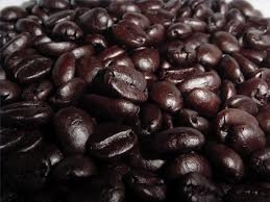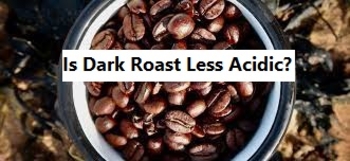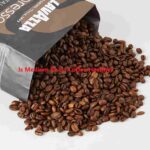Is dark roast less acidic? Yes, dark roast is indeed less acidic. But the journey of understanding acidity in coffee isn’t as straightforward as a simple yes or no answer. As a coffee lover, I’ve delved into the intricate world of coffee flavors, exploring the nuances of acidity and its relationship with roast levels. From tangy Ethiopian Yirgacheffes to bold Sumatran brews, each cup tells a unique story shaped by factors like origin, processing, and roast.
In this article, we’ll embark on a flavorful expedition to unravel the mysteries of acidity in coffee. We’ll navigate through the roasting process, compare light and dark roast coffees, and share personal experiences to shed light on the complex interplay between roast levels and acidity. So, grab your favorite mug, and let’s embark on this aromatic adventure together.
Understanding Acidity in Coffee
Acidity in coffee is a multifaceted characteristic that contributes significantly to its flavor profile. Contrary to what some may assume, acidity in coffee does not refer to the pH level but rather to a perceived brightness or sharpness on the palate. It adds vibrancy and complexity to the taste, often described as citrusy, fruity, or wine-like.
Differentiating between perceived acidity and pH levels is crucial. While some coffees may have higher acidity levels, they may not necessarily register as sour or acidic in taste. Instead, acidity enhances the overall flavor balance, providing a refreshing and lively sensation.
The Roasting Process
Roasting plays a essential role in shaping the flavor profile of coffee beans. During the roasting process, raw green coffee beans undergo chemical transformations that unlock their aromatic compounds and develop their characteristic flavors.
Roasting progresses through various stages, from light to dark, each imparting distinct qualities to the beans. Light roast coffees typically retain more of their natural acidity, as they are roasted for a shorter duration, preserving the bean’s inherent flavors. On the other hand, dark roast coffees undergo a longer roasting period, resulting in caramelization of sugars and oils, which can mask acidity and create a bolder, richer flavor profile.
Light Roast vs. Dark Roast
The debate between light roast and dark roast aficionados often revolves around acidity levels. Light roast enthusiasts appreciate the bright, acidic notes that shine through in their brews, while dark roast aficionados favor the deep, smoky flavors associated with darker roasts.

Perceived acidity in coffee varies significantly between light and dark roast. Light roast coffees tend to exhibit higher levels of acidity, which contribute to their crisp, lively character. In contrast, dark roast coffees are often perceived as less acidic due to the prolonged roasting process, which caramelizes sugars and imparts a smoother, less acidic taste profile.
Factors Influencing Acidity
Several factors contribute to the acidity levels in coffee, beyond just the roast level. The origin of the coffee beans plays a significant role, with certain regions known for producing beans with naturally higher acidity, such as Ethiopia and Kenya. Additionally, the varietals of coffee plants and the altitude at which they are grown can influence acidity levels.
Processing methods also impact acidity. Washed process coffees tend to have a cleaner, more pronounced acidity, while natural or honey process coffees may exhibit sweeter, fruitier acidity due to fermentation during processing.
Brewing techniques further affect acidity perception. Factors such as grind size, water temperature, and extraction time can either enhance or diminish acidity in the final cup.
Personal Experience with Acidity
As a coffee lover with a penchant for exploring different flavor profiles, I’ve had the opportunity to sample a wide array of coffees, each offering its own unique acidity experience. From the bright, citrusy notes of a light roast Ethiopian Yirgacheffe to the smooth, chocolatey richness of a dark roast Sumatran, my palate has savored the diverse spectrum of acidity in coffee.
One memorable experience involved tasting a specialty coffee from Guatemala, known for its bright, lively acidity reminiscent of ripe berries and citrus fruits. The acidity danced on my tongue, leaving a lingering sweetness that captivated my senses.
Conversely, I’ve also enjoyed the velvety smoothness of a well-crafted espresso made from a dark roast blend. While the acidity was less pronounced, the bold flavors and creamy texture offered a comforting indulgence.
Myth vs Reality
Despite common misconceptions, the relationship between roast level and acidity is not always straightforward. While it’s true that dark roast coffees tend to be perceived as less acidic, this doesn’t mean they lack acidity altogether. Rather, the roasting process alters the flavor profile, emphasizing different aspects of the coffee beans’ inherent qualities.
It’s essential to dispel the myth that dark roast equals low acidity and vice versa. Coffee enthusiasts should explore a variety of roast levels and origins to discover their preferred flavor profiles, rather than relying on generalizations.
Tips for Choosing the Right Coffee
When selecting coffee, consider your personal preferences regarding acidity levels. If you enjoy bright, vibrant flavors, opt for light roast coffees from regions known for their acidity, such as Ethiopia or Colombia. Experiment with different processing methods and brewing techniques to highlight acidity in your brew.
Alternatively, if you prefer a milder, smoother cup, explore medium to dark roast coffees with nuanced flavor profiles. Look for beans with tasting notes that align with your taste preferences, whether it’s chocolatey, nutty, or fruity.
Adjust your brewing parameters accordingly to fine-tune acidity levels to your liking. Play with grind size, water-to-coffee ratio, and extraction time to optimize flavor extraction and balance acidity with sweetness and bitterness.
Conclusion
In conclusion, the question “Is dark roast less acidic?” warrants a nuanced exploration of the intricate relationship between roast level and acidity in coffee. While dark roast coffees are often perceived as less acidic due to the roasting process, acidity remains a complex and dynamic component of coffee flavor profiles.
As coffee lovers, we have the privilege of embarking on a sensory journey, discovering the diverse array of flavors and aromas that coffee has to offer. Whether you prefer the bright, acidic notes of a light roast or the smooth richness of a dark roast, there’s a coffee out there to satisfy every palate.
Embrace experimentation, challenge preconceptions, and savor the complexities of acidity in coffee. After all, the joy of coffee lies in its endless possibilities and the endless exploration of its flavors.







